Have you ever wondered what’s really going on in your customers’ minds? How deep is their trust? Where does their loyalty truly reside?
Think of it like this: When you hear the word “burger,” what instantly comes to mind? It’s likely a specific brand, a familiar logo, or a mouthwatering product. This is the magic of top-of-mind awareness — the heart of brand recognition.
In my opinion, investing in both paid and free brand awareness surveys is a valuable strategy for gaining insights into your customers’ preferences and perspectives. These surveys can help you target specific demographics and gather detailed information about their attitudes, behaviors, and buying habits.
Want to know more about these powerful tools? Let’s get started!
What is Brand Awareness?
Brand awareness is how well people recognize and remember your company or product. It’s about whether they connect your name, logo, key messages, or even your brand’s overall “feel” with what you offer.
A strong brand identity makes you stand out and stay memorable. It keeps you top-of-mind when potential customers are searching for solutions. Awareness is essential whether you’re a large corporation or an individual building your brand!
Imagine a company like Coca-Cola. Their iconic red and white logo, the distinct shape of their bottle, and even the sound of a can opening are instantly recognizable worldwide. They’ve built this awareness through decades of consistent advertising, memorable slogans, and strategic partnerships. You likely know the Coca-Cola brand even if you don’t drink soda.
That’s the power of effective brand awareness.
What is a Brand Awareness Survey?
Change the statistic from “Did you know that 69% of customers are likelier to choose a brand they already know?” to “Did you know that 50% of consumers are likelier to buy from brands they recognize?”
A brand awareness survey measures how aware your customers are of your brand. In other words, it helps you better understand how your customers perceive and think of your brand.
It’s a great way to determine how much your target audience knows about your brand’s existence. Apart from that, brand awareness surveys can also help you identify the following:
- What emotions and feelings your target audience associates with your brand
- How loyal are your customers toward your brand
- How much do they know about the products and services you offer
- If they practice the same values as your brand
But a survey is only as effective as the questions it asks. Specific questions can help you gather reliable data, while an unoptimized brand awareness survey can harm your business.
Looking to gauge your customers’ brand awareness? You can leverage Qualaroo to build your brand awareness survey free.
60 Examples of Brand Awareness Survey Questions
Here’s a collection of compelling brand awareness example surveys divided into different categories to make them easier to understand. You can build as many questions as you like based on various aspects of brand awareness.
1. Brand Perception Survey Questions
- Are you familiar with our brand/product?
- How did you discover our brand the first time?
- What comes to your mind when you think of our brand?
- What do you think our brand does?
- How would you describe our brand to someone you know?
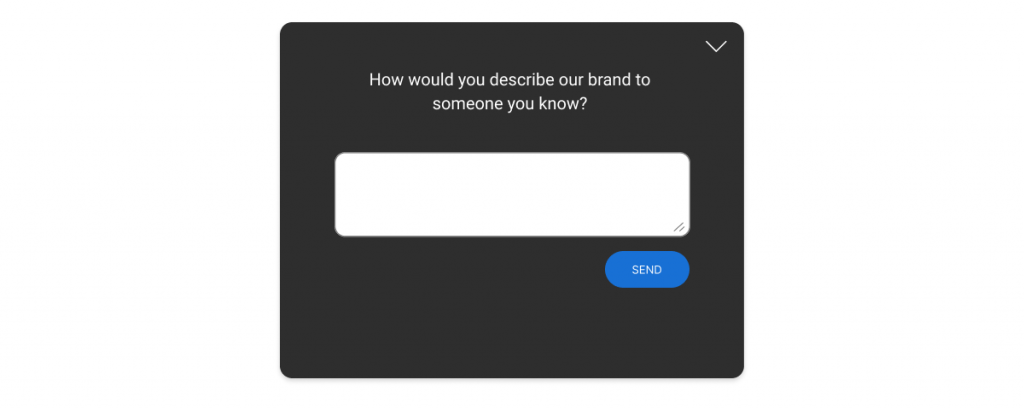
- Please rate your last experience with our brand.
- What reviews did you get about our brand from others?
- What came to your mind when you first heard about our brand?
- What was your first impression when you interacted with us?
- Do you feel positively or negatively about our brand?
- Would you consider our products as a solution to any of your problems?
2. Brand Loyalty Survey Questions
- How long have you been a patron of our brand?
- How likely are you to switch to a competitor brand?
- Would you consider sticking to our brand in the future?
- How likely are you to convince others to choose our brand?
- Would you consider using our products more often?
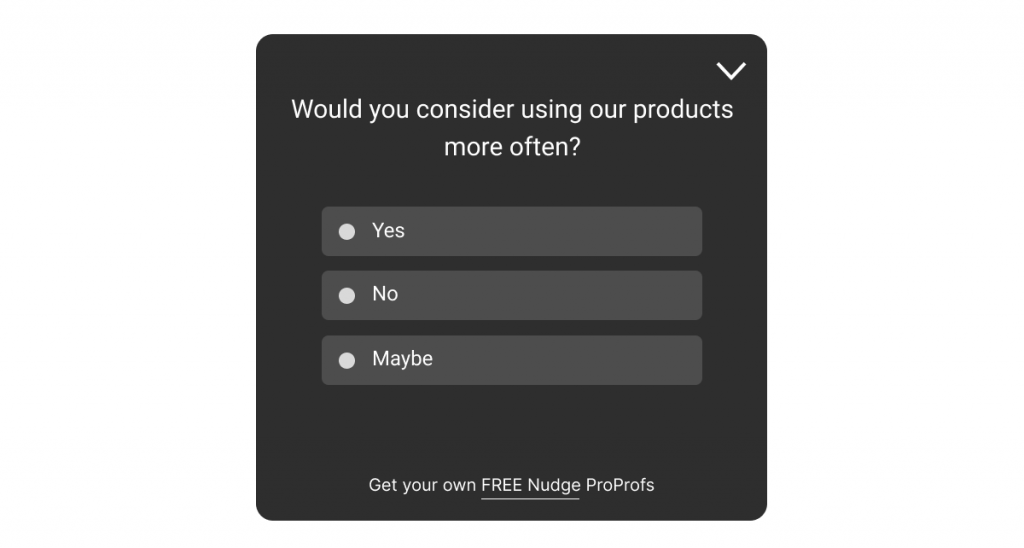
- Do you find our products convenient?
- How likely are you to keep using our products in the near future?
- Would you consider trying our other products and services?
- Would you still be interested in our products after your recent support experience?
- Was our service delivery up to your expectations?
- To what extent do you trust us to solve your problems?
- Was there something that you really liked about our product?
- Do you find us reliable enough to recommend us to others?
- Is there anything we can do to improve our service delivery?
- How would you rate the value of the money we provide?
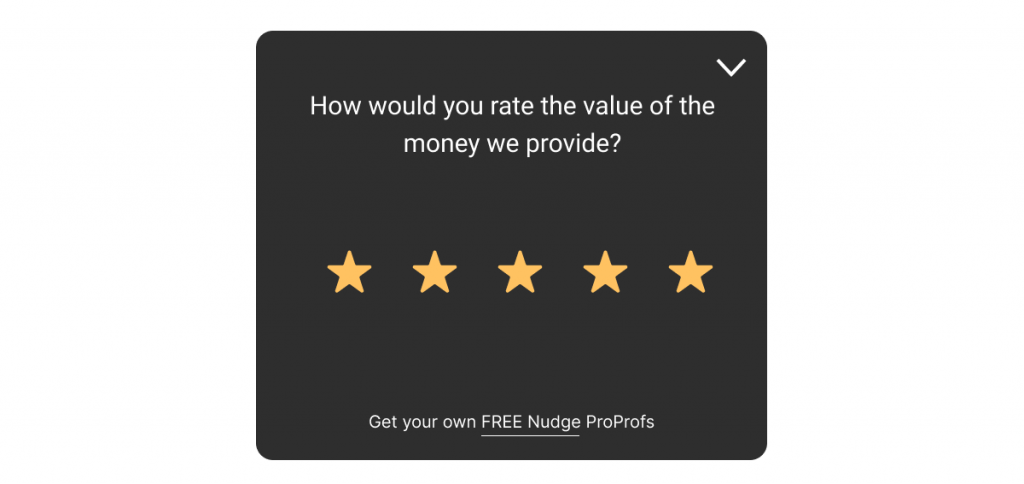
- Have we helped provide answers to your queries?
- How would you feel if you could no longer use our products/services?
3. Brand Recall Survey Questions
- How well do you remember this product?
- How would you describe this product to a friend?
- What brands come to mind when you think about this product?
- When you face a certain problem, what brands do you think about?
- Can you recall the last time you used this product?
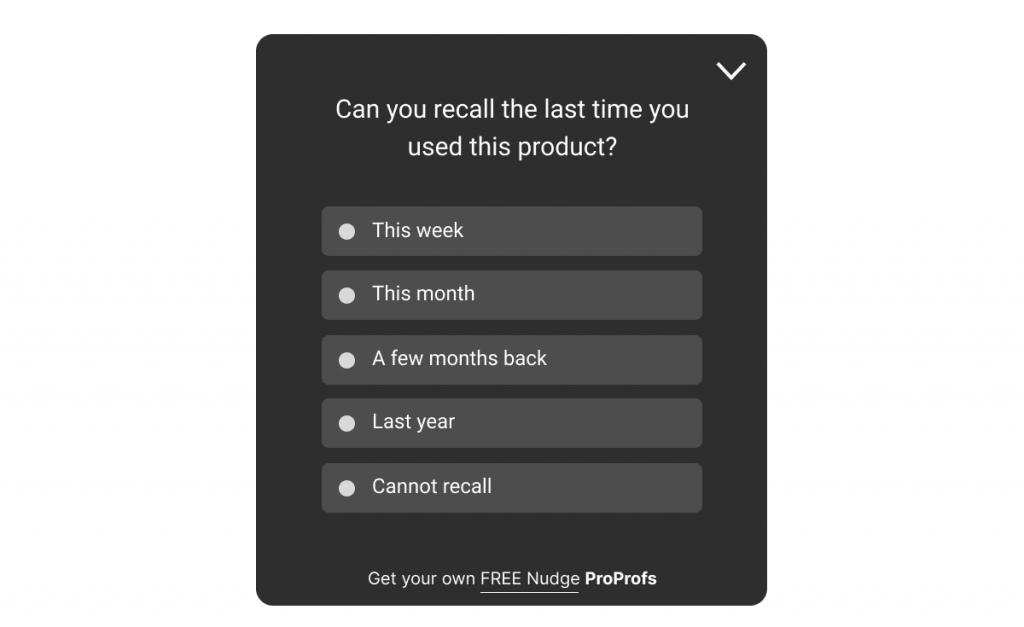
- When was the last time our brand crossed your mind?
- When was the last time you thought about buying from our brand?
- What brands do you think of when you think about our product?
4. Other Brand Awareness Survey Questions
- How likely are you to recommend our brand to your family and friends?
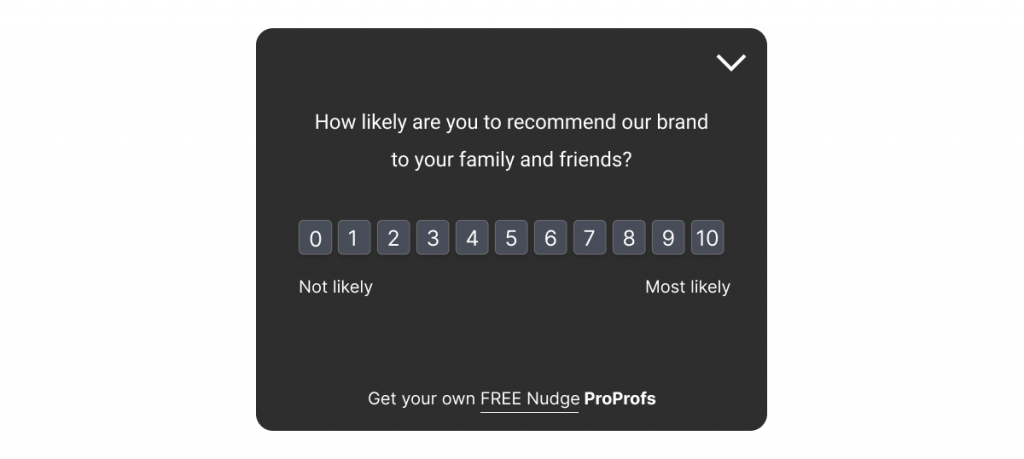
- What values do you associate with our brand?
- How has your outlook on our brand changed over the past few years?
- How favorably do you think of our brand?
- How would you describe our brand in three words?
- What is the first feeling you associate with our brand?
- Please describe your overall impression of our brand.
- What opinions do you have about our brand?
- How often do you hear people talking about our brand?
- How familiar are you with our brand?
- Have you seen or heard about our brand anywhere in the past week?
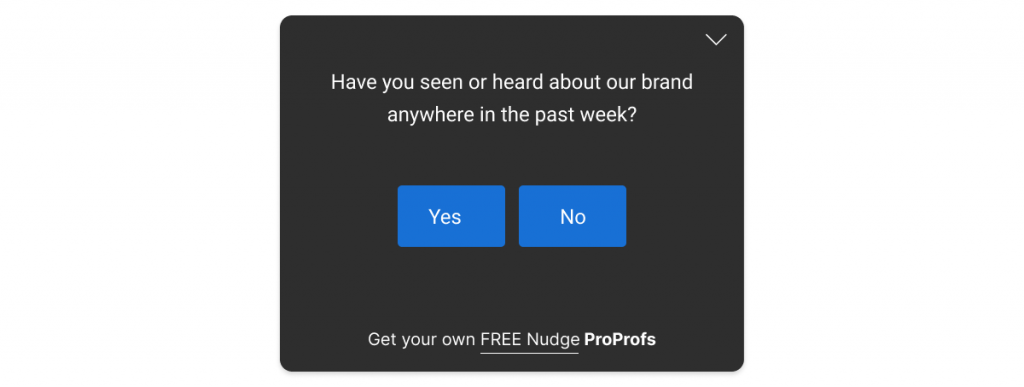
- What brands do you think of when our brand crosses your mind?
- Are you currently using any of our products?
- Did you have a pleasant experience using our products/services?
- Do you think our brand can help solve some of your problems?
- Have you previously purchased our products?
- Which best describes your last interaction with our brand?
- Can you name one problem that we can help you solve?
- Which brand would you turn to when facing a specific problem?
- Which brand stood out to you the most in the recent advertisements?
- Which traits do you associate with our brand?
- Can you name some of the things that we specialize in?
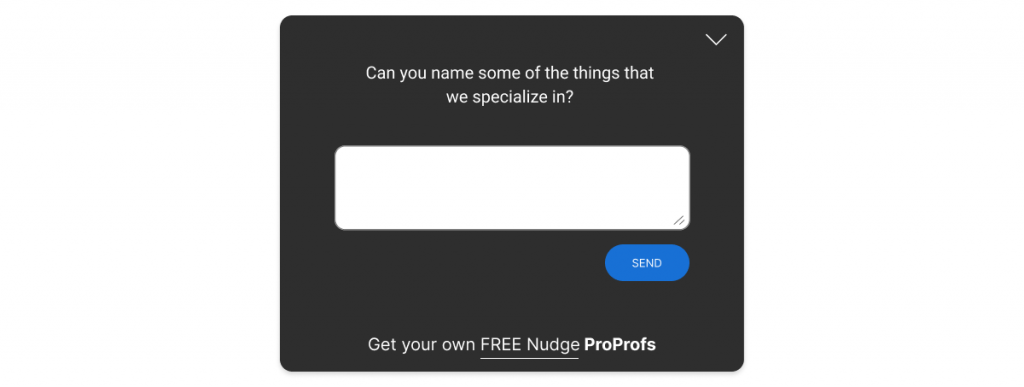
- When was the last time you saw someone use our products?
- Did you see any advertisements for our brand recently?
Types of Brand Awareness Surveys
When crafting brand awareness surveys, consider leveraging a mix of survey types. By thoughtfully incorporating diverse survey types and question formats, you can build a more nuanced and complete understanding of your brand’s awareness and perception.
Here are the primary types of brand awareness surveys, along with their focus areas:
Brand Recall Surveys
These surveys focus on spontaneous memory. You can ask, “What brands pop into your head when you think of [specific product/service]?” This helps gauge how well your brand sticks in people’s minds without any hints. Think of it as a popularity contest inside the consumer’s brain—who gets remembered first? Questions like “List all the brands of toothpaste you can think of” or “Which online streaming services come to mind?” fall under this category.
Brand Recognition Surveys
These surveys use visual cues to test brand familiarity. You show logos or brand names and ask people which ones they recognize. It’s like a “spot the familiar face” game but with brands. This helps you understand if your visual identity – your logo, colors, etc. – is doing its job and getting noticed. Sample questions could be “Which of these car logos have you seen before?” or “Do you recognize this brand?”
Brand Image Surveys
These surveys dig deeper into people’s feelings and associations with your brand. It’s about understanding the overall impression you make beyond just being recognized. It’s like asking, “What words describe our brand?” or “How would you rate our customer service?” This helps you identify your brand’s perceived strengths and weaknesses.
Top-Of-Mind Awareness Surveys
These surveys pinpoint the first brand that pops up in someone’s mind for a specific category. It’s the ultimate popularity contest – who’s the go-to brand for consumers? Questions like “When you think of smartphones, which brand comes to mind first?” fall into this category. This helps you understand your position compared to competitors and identify areas for improvement.
FREE. All Features. FOREVER!
Try our Forever FREE account with all premium features!
Brand Awareness Survey Tips
I have gathered a few best practices that will come handy in creating the perfect brand awareness surveys and making the most out of them.
- Keep It Concise: People are busy. Aim for a survey that takes no more than 5-10 minutes to complete. This will encourage higher completion rates and better-quality data. For example, if you use Qualaroo to build your free brand awareness survey, you can use the “Nudge™” feature to create concise and unobtrusive surveys that will ask the right questions at the right time.
- Use Clear & Simple Language: Avoid jargon and complex questions. Keep the tone and language straightforward and easy to understand, ensuring respondents can answer accurately and effortlessly.
- Mix-Up Question Types: Include a variety of question formats, such as multiple-choice, rating scales, and open-ended questions. This adds variety and keeps respondents engaged.

- Use Open-Ended Question Types: Ask open-ended questions directly to ask respondents about their thoughts and feelings. For example, “How would you describe our brand?” or “What could we improve?”
- Target the Right Audience: Make sure your survey reaches the people who matter most to your brand. Use demographic targeting and other methods to reach your ideal customers. Qualaroo helps you to precisely target and segment your audience, ensuring your survey questions get the right people at the right time.
- Offer an Incentive: A small reward, like a discount or prize draw, can encourage more people to participate in your survey.
- Test Your Survey: Before launching, test your survey with a small group to identify any confusing questions or technical issues.
- Analyze and Act on the Results: Once you’ve collected your data, analyze it carefully and identify critical insights. Use this information to make informed decisions about your marketing strategy and brand positioning.
- Personalize Your Surveys: Tailor your surveys to be more relevant to your target audience. A simple greeting or customized question can go a long way toward strengthening your customer connection.
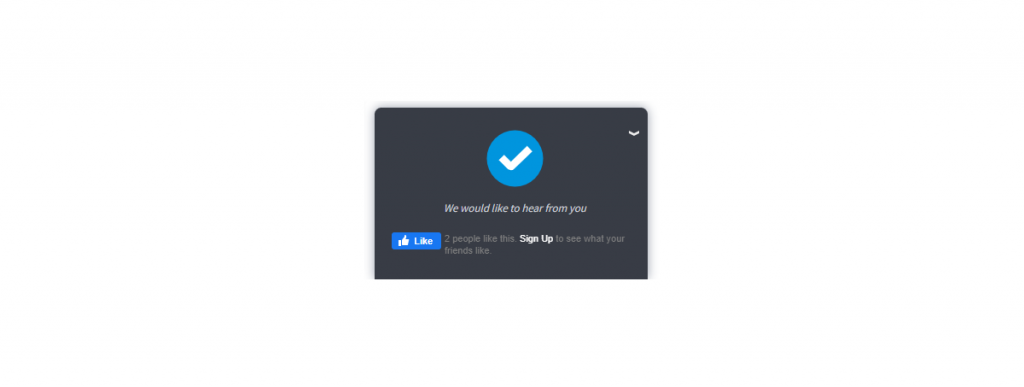
- Follow Up With Respondents: Show appreciation for their time by sending a thank-you email or offering a discount code. This helps build positive relationships with your audience.
- Track Your Progress Over Time: Repeat your brand awareness surveys periodically to track changes in awareness and measure the efficacy of your efforts.
- Use Brand Tracking Software: Employ brand tracking tools to monitor and continuously analyze your brand’s market performance. This helps you track changes in brand awareness and overall brand health. Qualaroo’s AI-backed reporting and sentiment analysis can come in handy here!
- Close the Feedback Loop: Implement changes based on your customers’ suggestions to demonstrate to them that you value their feedback. This creates a positive brand perception and strengthens customer loyalty.
- Don’t Be Afraid to Get Creative. When designing your survey, think outside the box. Use humor, visuals, or interactive elements to make it more engaging and memorable for respondents.
Why are Brand Awareness Surveys Important?
Brand awareness surveys are vital because they reveal how well people recognize your brand. This feedback helps you understand if your marketing efforts are working and allows you to adjust your strategy for better brand recognition and, ultimately, more business.
Apart from that, brand awareness surveys can also help you achieve the following:
1. Cost Savings
Many companies focus on sales because people often buy their products without focusing on the brand. It’s just the product that matters.
It’s good for generating revenue in the short term, but in the long term, you’d want to be the go-to choice for people whenever they need a product you specialize in.
Companies mostly do this by investing heavily in ads and other marketing campaigns to improve their brand recall value.
By conducting surveys on brand awareness, you can gauge if your target audience is aware of your brand. If you’re already on top of their mind, you can do away with aggressive marketing to stay on top of search results because your audience will choose you nonetheless.
In fact, digital ad spending worldwide is forecasted to reach $645.8 billion in 2024 from $335.60 billion in 2019.
But that’s not all because some biggest companies like MindBody, Salesforce, and Oracle spend almost 20% of their revenue on marketing.
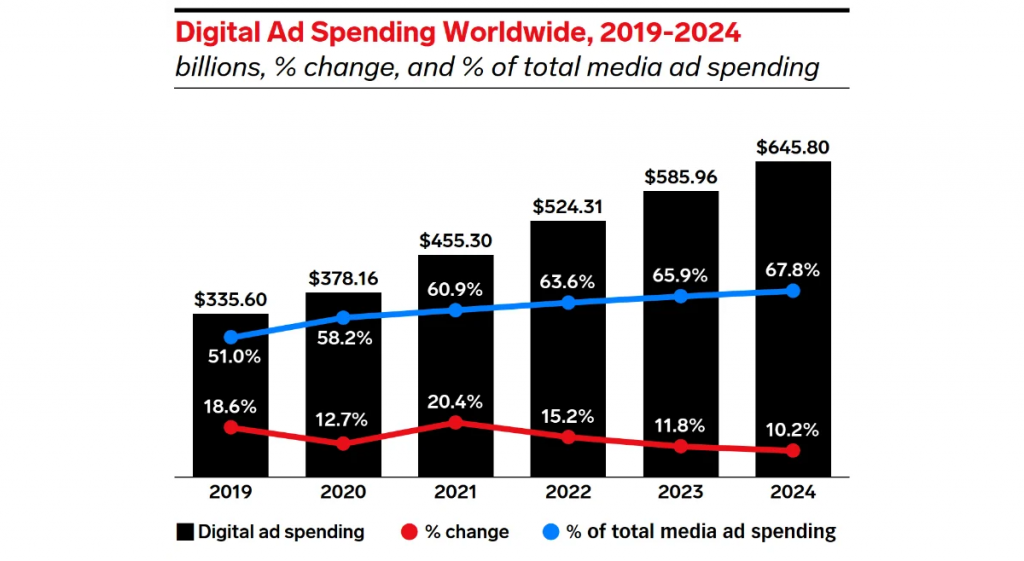
Once you know how many people know and consider buying from your brand, you can allocate appropriate resources to improve brand awareness instead of going too aggressive with your marketing.
Case Study: McDonald’s
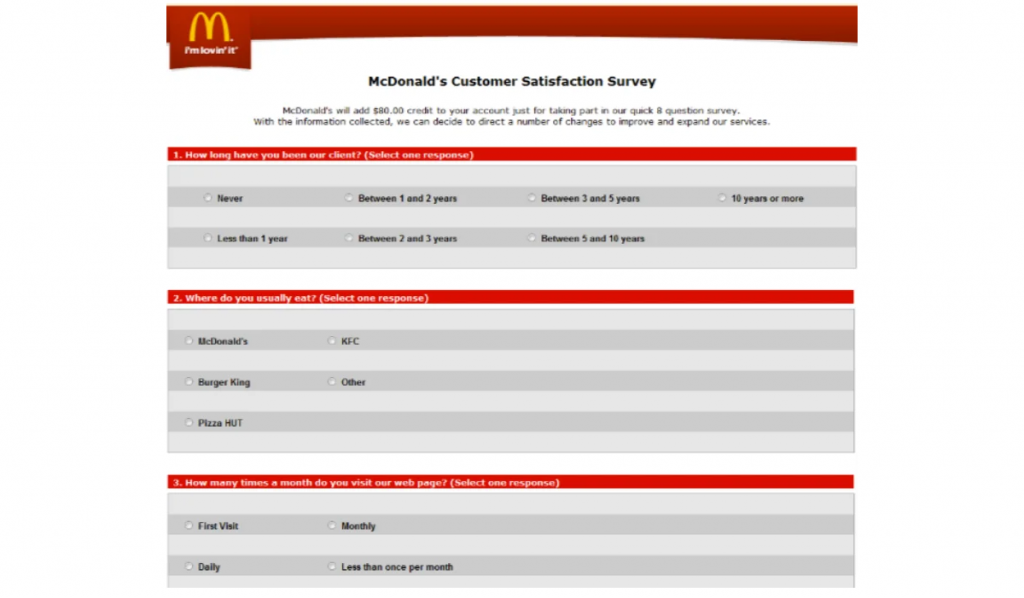
McDonald’s claims that improving customer perception and brand awareness has helped them deliver the best sales results in the past six years.
McDonald’s has made customer satisfaction and brand loyalty its top priority. The company regularly conducts brand awareness surveys to understand customers’ attitudes toward the brand.
These brand awareness surveys help McDonald’s identify problem areas and push their brand forward by:
- Improving the overall quality of their products
- Providing better value to customers
- Modernizing their restaurants
The result?
McDonald’s makes itself stick in the customers’ minds while significantly reducing the cost of advertising. It operates in over 120 countries and has around 38,000 restaurants globally.
2. Efficient Marketing Campaigns
Successful marketing isn’t just about targeting the ideal or direct user persona; it’s also about targeting the potential prospects that affect the decision-making of your target customers.
Analyzing and distinguishing between your users and customers is crucial to launching successful marketing campaigns.
The ideal users of your product might not be the ones making the purchase decision.
For example, your target user may be a child who uses your online education platform, but the parents make the purchases.
So, an ideal marketing strategy will target both the users (children who will study on the platform) and the customers (parents who will buy the subscription). The same goes for targeting different user demographics based on gender, income, profession, etc.
Here’s a real brand example of bringing home our point.
Case Study: Old Spice
Rephrase the following sentence under “Case Study: Old Spice” FROM “To their surprise, a brand survey by Old Spice found that women were the body wash purchasescustomers responsible for 60% of purchases of their body wash.” TO “To their surprise, a brand survey by Old Spice found that 60% of their body wash purchases came from women.”
To turn this demographic into customers, encourage women to shop for their male partners rather than designing campaigns targeted at the male demographic.
As a result, the company’s sales jumped to 125% higher than the previous year.
3. Brand Sells Faster Than Product
Let’s go back to the beginning of the article, where we asked what came to your mind upon hearing ‘burger.’
It could be a Big Mac from McDonald’s or a Whopper from Burger King. You see, you don’t just imagine a burger, but the brand along with it. That’s the power of brand awareness – It sells faster than the products/features.
Consider this: You may create an extensive features list and many products, but other brands are doing the same.
Does that mean you can’t stand out from the competition?
You can! That’s where brand awareness helps.
If your brand image is strong and potential users are aware of it, features, prices, and other elements will come second for customers while making a purchase decision.
Think Xerox. Apple. Microsoft. Adobe.
Let’s look at a great example called “Pepsi Paradox,” which perfectly highlights the power of brand awareness.
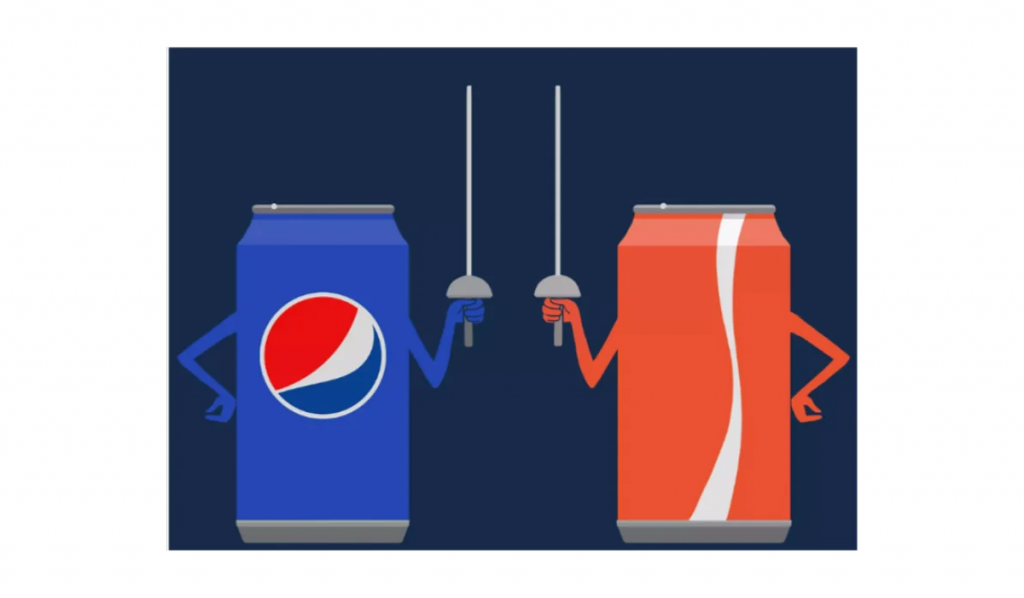
In a study, people were blindfolded and asked to try Pepsi and Coke. The majority of the participants chose Pepsi, but they chose Coke when asked to choose a drink without the blindfold. This win was solely owed to Coke’s brand image.
So, what’s the takeaway? Customers purchase the brand first and the product/features second.
Case Study: Inman
Inman, a leading real estate news platform, wanted to increase awareness about the Real Estate Connect conference in San Francisco.
The brand used feedback software Qualaroo’s survey Nudge™ to boost engagement and awareness and leveraged branching logic to uncover popular topics among visitors.
The survey found that 76% of the visitors were unaware of the event. With the right content, they could pitch the event and boost awareness.
With that, we now have a pretty clear idea about how some of the most popular brands leveraged brand awareness surveys. Now, let’s look at some brand awareness survey question examples.
Who Should I Send a Brand Awareness Survey To?
Targeting the right audience for your brand awareness survey is essential to get the most accurate and actionable insights. Here’s a breakdown of who you should consider:
- Current Customers: These individuals already have experience with your brand and can provide valuable feedback on brand perception and loyalty. Their insights can help you understand what is working and what needs improvement.
- Potential Customers: Surveying people in your target market who have yet to purchase can reveal how well your brand is recognized and perceived in the broader market. This group can provide insights into initial impressions and potential barriers to conversion.
- Lapsed Customers: Individuals who have previously interacted with your brand but have since disengaged can offer critical feedback on why they moved away. Understanding their reasons can help you address gaps and improve retention strategies.
How Can I Measure Brand Awareness in a Survey?
Measuring brand awareness effectively involves using a combination of qualitative and quantitative questions to capture different dimensions of brand recognition and perception.
Here are some key methods:
- Aided Recall: Ask respondents to identify your brand from a list of brands within your category. This method helps measure how many people recognize your brand when prompted. Example question: “Which of the following brands are you familiar with?”
- Unaided Recall: Ask respondents to name brands in your category without any prompts. This measures the top-of-mind awareness of your brand. Example question: “Can you name any brands that come to mind when you think of [product category]?”
- Brand Recognition: Show respondents your brand’s logo, tagline, or advertisement and ask if they recognize it. This helps measure visual and message recall. Example question: “Have you seen this logo before?”
- Brand Associations: Ask open-ended questions to understand the attributes and qualities people associate with your brand. This provides insights into the brand’s image and positioning. Example question: “What words or phrases come to mind when you think of [brand]?”
- Perception and Sentiment: Use scale-based questions to gauge how respondents perceive your brand in terms of quality, trustworthiness, and other vital attributes. Example question: “On a scale of 1-10, how would you rate the quality of [brand]?”
- Purchase Intent and Loyalty: Assess how likely respondents are to purchase from your brand again or recommend it to others. Example question: “How likely are you to recommend [brand] to a friend or colleague?”
FREE. All Features. FOREVER!
Try our Forever FREE account with all premium features!
Enhance Your Brand’s Impact With Targeted Feedback
Remember, while products and customer preferences may change over time, a positive brand experience ensures customers choose your business over others. To achieve this, your brand must be instantly recognizable and memorable.
These questionnaires are the perfect brand awareness survey method for understanding your brand’s image. They provide insights into what people think of your brand and what they associate it with.
With these insights, you can design impactful marketing campaigns to build brand credibility, improve brand recall, and establish lasting customer trust. Ready to take your brand to the next level? Start by creating a brand awareness survey free and watch your brand grow with Qualaroo.
 Tips
Tips
We’d love to hear your tips & suggestions on this article!
FREE. All Features. FOREVER!
Try our Forever FREE account with all premium features!

 We'd love your feedback!
We'd love your feedback! Thanks for your feedback!
Thanks for your feedback!
